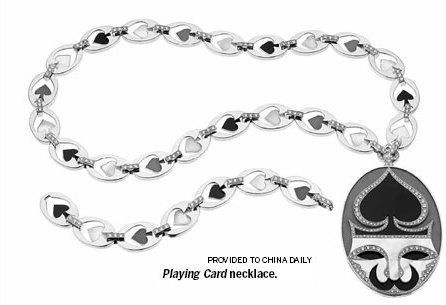Jeweler gets museum treatment
Updated: 2013-11-03 08:14
By Marcy Medina(China Daily)
|
|||||||
Paying tribute to Bulgari's artistic contribution to design, the Fine Arts Museums of San Francisco displays The Art of Bulgari: La Dolce Vita & Beyond, 1950-1990 through Feb 17.
On show are about 150 exhibits, showcasing the glamour of the 129-year-old jewelry house.
"This is the first time Bulgari has been shown in an American museum, which shows that it is an interesting enough jeweler for a museum to treat its products over the years as works of art and fine examples of design," says Martin Chapman, curator in charge of European decorative arts and sculpture of the museum.
Chapman worked closely with Bulgari's historic consultant, Rome-based Amanda Triossi, who helped develop the company's archives while she was researching her first book on Bulgari in 1994.
A key element shown is Bulgari's departure from traditional jewelry design. "Moving away from the popular Parisian style of the '60s, Bulgari struck out in a new direction with bold cabochon jewels, weightiness and a style rooted in its own Roman origins, such as the coin," says Chapman.
The house notably began to embrace colorful combinations of semiprecious and precious gemstones, heavy use of gold and forms derived from Greco-Roman classicism, the Italian Renaissance and the 19th-century Roman school of goldsmiths. Bulgari helped develop a look that would come to be known as the "Italian school" of jewelry design.
"Regardless how expensive the pieces are, there's the idea of casual formality that is really the link with Italian style," says Triossi. "You can wear the same jewelry to a picnic or a ball."
The exhibit also includes pieces from the '70s and '80s, a particularly innovative period for the jeweler influenced by Pop Art and other contemporary trends.
"The hard-edged designs of the 1970s included a whole range based on the Stars-and-Stripes motif, while in the 1980s the Parentesi collection had a smoother, modular, almost architectural presence. Both show how the jeweler could lead in new directions with a strong sense of design," Chapman says. "Andy Warhol once said he thought that Bulgari was the greatest contemporary art museum in the world, which says a lot coming from an artist."
Also notable are three never-before-seen serpent bracelets on loan from a private collector.
Although one of Triossi's jobs is to buy back important vintage pieces as they come up for auction, her spending power has been diminished as prices have gone up, and many collectors from the '60s are still holding onto their pieces, untouched by "the three Ds: death, disease and divorce", she says.
She surmises the show will be popular because "jewelry has transcultural appeal. There isn't social strata that isn't interested in jewelry. From Indian beggars to American rock stars, everyone's interested."
The New York Times

(China Daily 11/03/2013 page13)